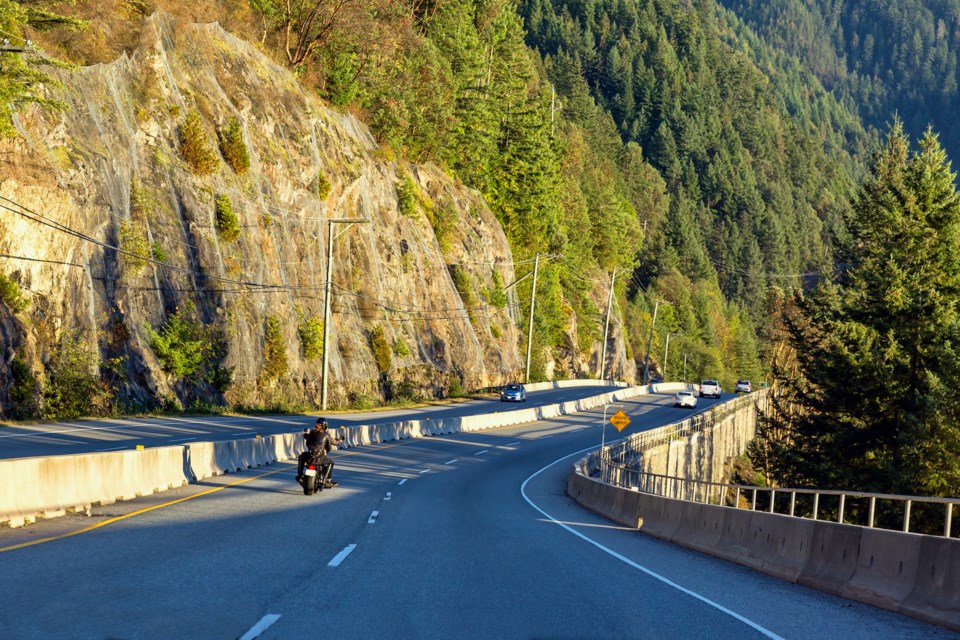A collision that shut down the Sea to Sky Highway for several hours this weekend is serving as a sombre reminder for motorists to stay safe.
On July 9, involving motorcycles occurred on Highway 99, near Lawrence Way, sending one person to hospital in critical condition.
Southbound traffic was shut down for over three hours on Saturday afternoon.
North Shore News reported that two motorcycles were involved in the incident and the RCMP Integrated Collision Analysis and Reconstruction Service, or ICARS, which is called in to investigate serious collisions, was at the scene.
That hasn’t been the only case where a collision recently had severe consequences for the highway.
With the summer months prompting an increase in travel, it’s been a typical pattern for more crashes to occur as the warmer weather sets in.
Not long before Saturday’s crash, on July 3, DriveBC reported the section of Highway 99 by Lions Bay was shut down due to a vehicle incident.
Another crash occurred near on July 12, prompting RCMP ICARS investigators to rush to the scene.
While authorities have not released the details of exactly what caused each incident, they are reason enough to revisit some road safety protocols for driving the Sea to Sky.
Neil Prissick, an instructor at the , said that perhaps one of the most significant safety issues he sees on the Sea to Sky is spacing between vehicles.
Prissick, who’s also a motorcyclist, said that people will often bring their city driving habits onto the highway, where those practices aren’t necessarily the safest.
“A lot of people, when they get on the highway, whether they’re experienced or not, tend to [use] that two-second following distance, on average, in the city,” he said. “[They’re] still doing it on the highway. You see it all the time.”
He said three to four seconds is the appropriate distance between vehicles travelling at highway speed.
To measure, look at a fixed point and start counting. Note how quickly it takes for your vehicle to reach that point.
Any less than three to four seconds is pushing it.
“Especially when travelling behind, because you get a lot of transport trucks going up that way,” said Prissick. “[People] are still driving too closely, where they can’t really see what’s happening down the road. And then all of a sudden, the brake lights come on. But by the time the brake lights come on, it’s too late.”
Another tip, he said, involved having a better read on road conditions up ahead.
“A lot of drivers, when they’re driving, kind of look too much just directly in front of their vehicle,” said Prissick. “If they could look down that road a little further, where they may be in up to 12 to 15 seconds, they can read the road within the conditions much easier, as opposed to seeing something that they have to suddenly react to.”
Brian Antonio, director of instruction at , said the Sea to Sky Highway can be an attractive place to go for motorcyclists because of its twists and curves.
But riders drawn to the highway must ensure they’re keeping themselves at a reasonable speed.
“As much as we here at this school talk about being sensible, and assessing risk and avoiding risk…You know, it’s sometimes hard to avoid not going too fast, especially on the Sea to Sky Highway,” Antonio said.
He said that people interested in testing out their skills at speeds beyond the legal limit should visit race tracks and push themselves there, not on the road.
“There’s a lot of unknowns on the highway that really put a rider at unnecessary risk when they’re out there doing this riding in an aggressive way,” Antonio said.
“As much as it is skill, it’s also judgment and knowing where and when they can use these skills and push the limits, but doing it in a way that’s safe.”



